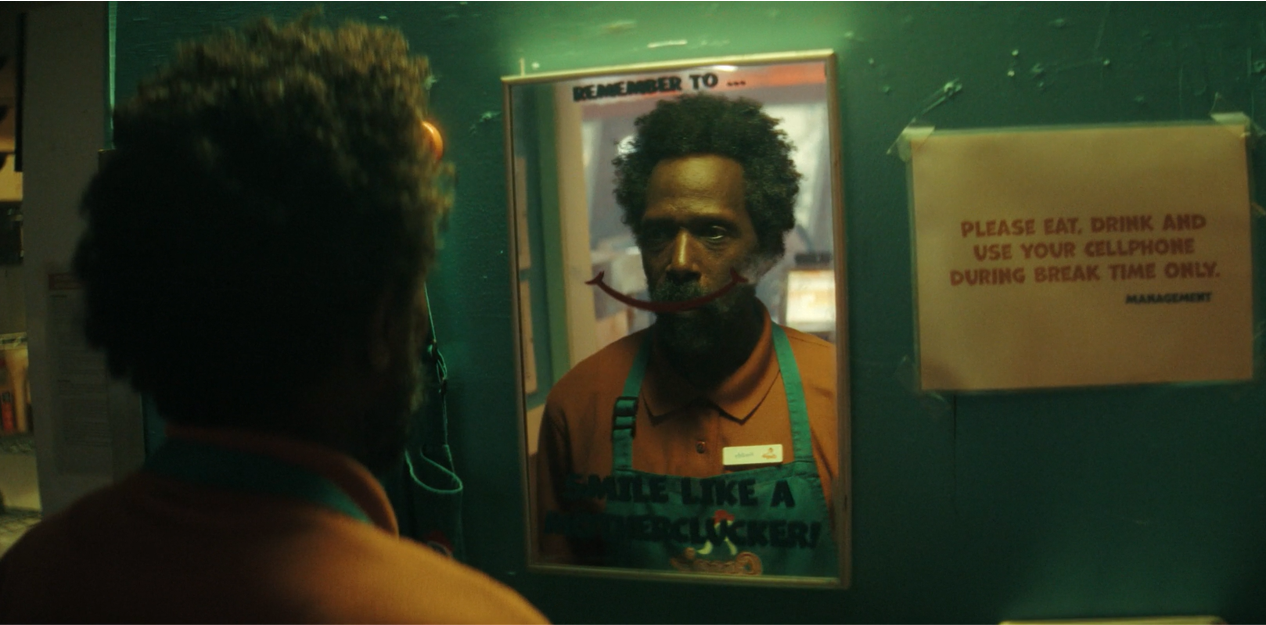The Apple TV+ crime drama ‘Smoke‘ follows Dave Gudsen, an ex-fireman turned arson investigator, as he teams up with Detective Michelle Calderone on his quest to hunt down two serial arsonists. The first, called Divide and Conquer, lights up delayed onset fire in multiple areas at once, enabling him to go after his real targets: the chips section of various supermarkets. While D&C’s identity continues to be a mystery, the second arsonist, nicknamed Milk Jug, is revealed early on to be Freddy Fasano, a worker at a fictional fast food joint called Coop’s Fried Chicken, who particularly targets the residents of Trolley Town. At the beginning of the show, Dave speculates that arsonists act in order to proclaim their mental state to the whole world. To that effect, Freddy’s life and reasoning remain a mystery, with the solution seemingly hidden behind open flames. SPOILERS AHEAD.
Freddy Fasano is Inspired by a Real-Life Arsonist
Created by Dennis Lehane, the character of Freddy Fasano is partially inspired by Thomas Sweatt, a real arsonist who terrorized the Washington area for over 30 years, making him one of the most prolific criminals in history. He was arrested on August 4, 2005, following which he confessed to over 340 arson-set fires, which resulted in multiple deaths and unimaginable destruction of property. Just like his fictional counterpart, Sweatt would fill milk jugs with gasoline and then set them on fire near his victims’ front porch or doorway. Typically, he would use swatches from his clothes as a wick, letting the fire slowly burn through the plastic before the gasoline vapors spread out into the house and catch fire. This modus operandi was consistent across his entire body of criminal activity, making him a notorious figure across cities.

Thomas Sweatt was born on November 1, 1954, and had led a life of poverty, hopping through various fast food joints to make a living, including Roy Rogers and KFC. Eventually, he settled at Lebaum Street, Washington, which became his initial den of criminal activity. He described putting up a friendly appearance among his neighbors, a disguise he referred to as the good part of himself. The other part, he explained, was responsible for a number of mysterious fires in the neighborhood, targeting abandoned buildings, homes, barber shops, and other establishments. Over the years, his range expanded, and soon, he was firesetting throughout the city’s eastern side. His ingenious method of ignition helped him avoid being caught and emboldened him to try out different locations and techniques.
Eventually, Sweatt would begin to target the middle-class neighborhood of Prince George’s County. In ‘Smoke,’ the character of Freddy Fasano burns down the house of a seemingly affluent family from the fictional neighborhood of Trolley Town. It is possible that the details of this scene draw vague inspiration from Sweatt’s activity in the county, as Fasano’s mesmerized reaction to the flames bears a resemblance to his real-life counterpart’s recorded memories of watching his work from a distance and feeling aroused. Sweatt further described that the fear of getting caught never quite went away, but he always asked God for forgiveness before committing arson. However, the fictional Freddy displays no such bindings.

Thomas Sweatt has expanded on the reasons behind his actions multiple times, most notably in the letters exchanged with journalist Dave Jamieson, wherein he claimed that arson filled him with a sense of power over people and their possessions. This power took on numerous forms, from not wanting someone to drive a particular car to not liking a haircut. Often, he would burn down the houses he found attractive, using fire’s destructive capacity as a measure of ownership. In the show, Freddy has a similar but nonetheless distinct motivation. Having led a terrible life, he is quick to envy. To that effect, he targets people he observes in their moments of happiness, following them to their house and then burning it down, sharing his negative emotions with those around him. Thus, while Freddy and Sweatt share many parallels, they also diverge at certain points.
At the heart of all of Freddy’s actions is the desire to have a good life, even when it runs into contradictions; he describes his small wants, a bed, a pair of clothes, and companionship, but they don’t seem to match with his ambitions, and his bitterness when he is unable to grasp them. For his real-life counterpart, things were slightly different, as he had mentioned taking great pride in his job as a fast food cook, sustaining a demanding job at the same KFC outlet for 12 entire years, eventually climbing his way up to becoming the unit manager. However, he also explained how the stress forced him to maintain a wall between his two conflicting personalities and yearnings, living life one day at a time. The fires, then, also served as his stress relief mechanism.
Thomas Sweatt’s Fires Eventually Led to His Capture
Thomas Sweatt’s reign of terror hit a turning point following the death of two innocents due to his arson offenses. The first incident took place on February 2, 2002, when a house fire triggered by him resulted in the death of 93-year-old Annie Brown. The other incident, which took place on June 5, 2003, took the life of 85-year-old Lou Edna Jones. The mounting pressure from the general public led to an intensive joint investigation by both federal agencies and local law enforcement, who were successful in tying his DNA to many cases, eventually leading to an arrest on August 4, 2005, and a subsequent confession that would help investigators close hundreds of cases spanning decades. He was formally charged with the federal crimes of arson and arson resulting in death.
Thomas Sweatt Remains Incarcerated in Hopewell, Virginia Today
On September 12, 2005, Thomas Sweatt was sentenced to life in prison and an additional 136 years without the possibility of parole after being found guilty on several counts. His charges included possession of destructive devices, destruction of buildings by fire resulting in personal injury, and possession of destructive devices in furtherance of a crime of violence. As per the criminal information filed in the District of Columbia, Sweatt was also charged with first-degree premeditated murder and second-degree murder. Following his sentencing, the serial arsonist was placed in the Federal Correctional Institution Petersburg Medium in Hopewell, Virginia, bringing an end to his spree of arson crimes.

Today, the 71-year-old firesetter continues his incarceration at the FCI Petersburg Medium. He described his arrest as an act of God, claiming that he had already had his fill and found little difference in his life whether he was caught or not. While Sweatt’s lawyer initially argued that a mental illness was the reason behind his client’s horrific actions, the arsonist chose to plead guilty. During his time in prison, he was tied to another significant case, the death of Roy Picott and Bessie Mae Duncan, following the injuries they sustained due to a house fire on January 11, 1985. While the official reports had previously attributed the incident to a dropped cigarette bud, Sweatt confessed to being the culprit, following Roy Picott on his way home that night before lighting his house on fire.
Sweatt’s story was most richly developed through the letters he exchanged with journalist Dave Jamieson roughly between 2005 and 2007 while still serving his prison sentence. He would go into many previously unexplored details, both physical and psychological, of his criminal activity. Often, he used the letters as a way of expressing his guilt and curiosity about the various people he had rubbed shoulders with throughout his long, tormented life. One of the notable entries in this corpus is the letter in which he described his sister’s new house and his complicated feelings toward it by saying, “Her neighborhood reminded me of the Birchwood Community off Livingston Rd in Oxon Hill, MD. My mind started to think of evil thing to do in that neighborhood. Those demons are still in me.”


